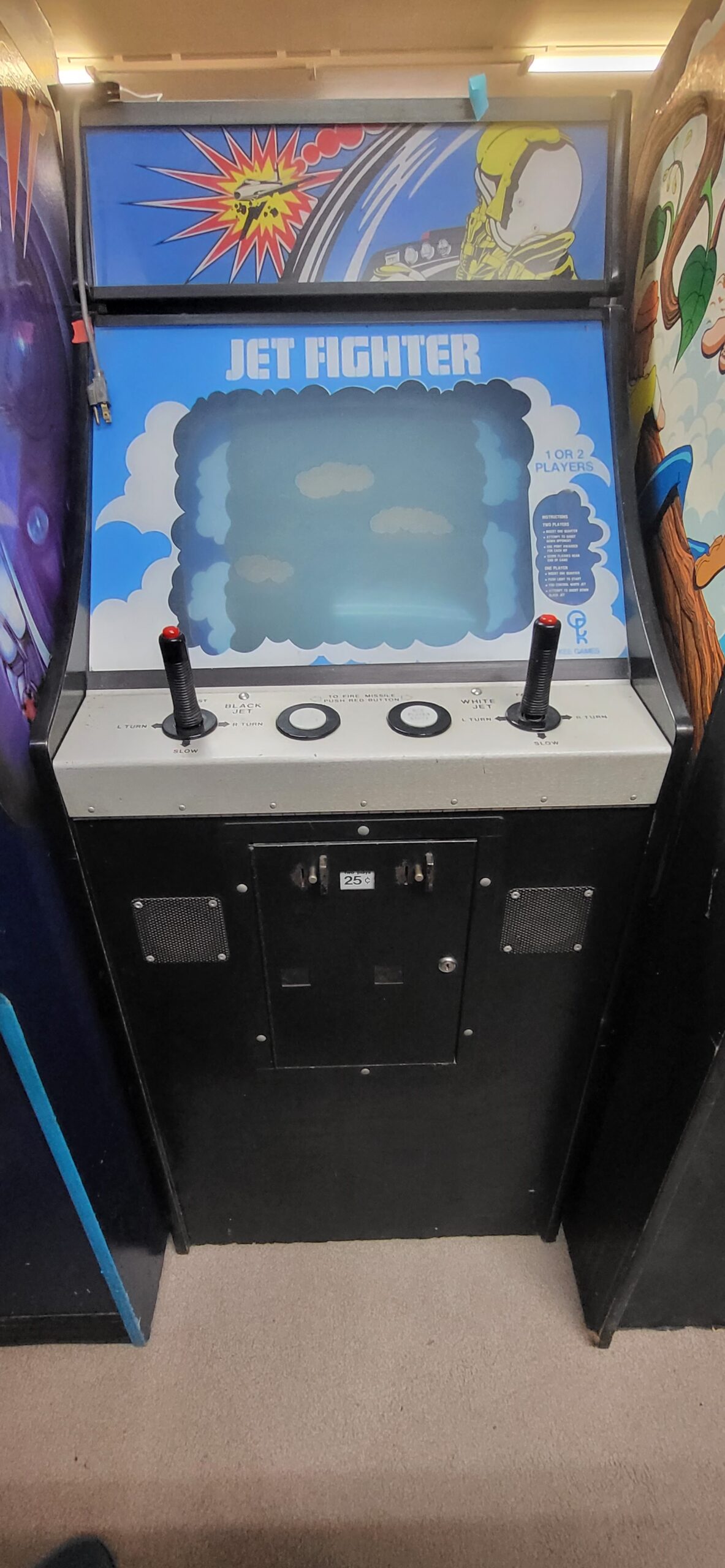
Jet Fighter
Arcade / Atari, Inc. 1975
Jet Fighter is a classic arcade game developed and released by Atari, Inc. in 1975. It is one of the earliest examples of a combat flight simulator and features simplistic yet engaging gameplay that captured the imagination of players during the golden age of arcade gaming.
Jet Fighter was designed by Atari engineer Dave Sheppard, who drew inspiration from contemporary military aircraft and the emerging fascination with flight simulation technology. The game was developed during a period of rapid innovation in arcade gaming, as developers sought to push the boundaries of what was possible with the limited technology of the time. Jet Fighter utilized vector graphics, a relatively new technology at the time, to create the illusion of flying a fighter jet through a 3D environment.
Upon its release, Jet Fighter was well-received by arcade-goers for its innovative gameplay and immersive experience. Players were drawn to the game’s intuitive controls and the thrill of engaging in aerial combat. Its success helped solidify Atari’s position as a leading developer of arcade games during the 1970s.
Jet Fighter spawned several variants and sequels over the years, including updated versions with improved graphics and gameplay mechanics. These iterations continued to build upon the foundation established by the original game, maintaining its legacy as a pioneering title in the flight simulation genre.
Due to its age and limited production run, original cabinets of Jet Fighter are considered rare collectors’ items. While exact production numbers are difficult to ascertain, surviving units are highly sought after by collectors and enthusiasts. Depending on condition and other factors, a fully functional Jet Fighter arcade cabinet can command a significant price on the collectors’ market.
Jet Fighter was built using hardware typical of arcade games of its era. Its hardware specifications include a custom-built CPU, vector display monitor, joystick controls, and various electronic components. For repairs, enthusiasts may require replacement parts such as capacitors, resistors, and transistors, which were commonly used in arcade machines of the 1970s. Additionally, maintenance of the vector display monitor may be necessary to ensure optimal performance.


